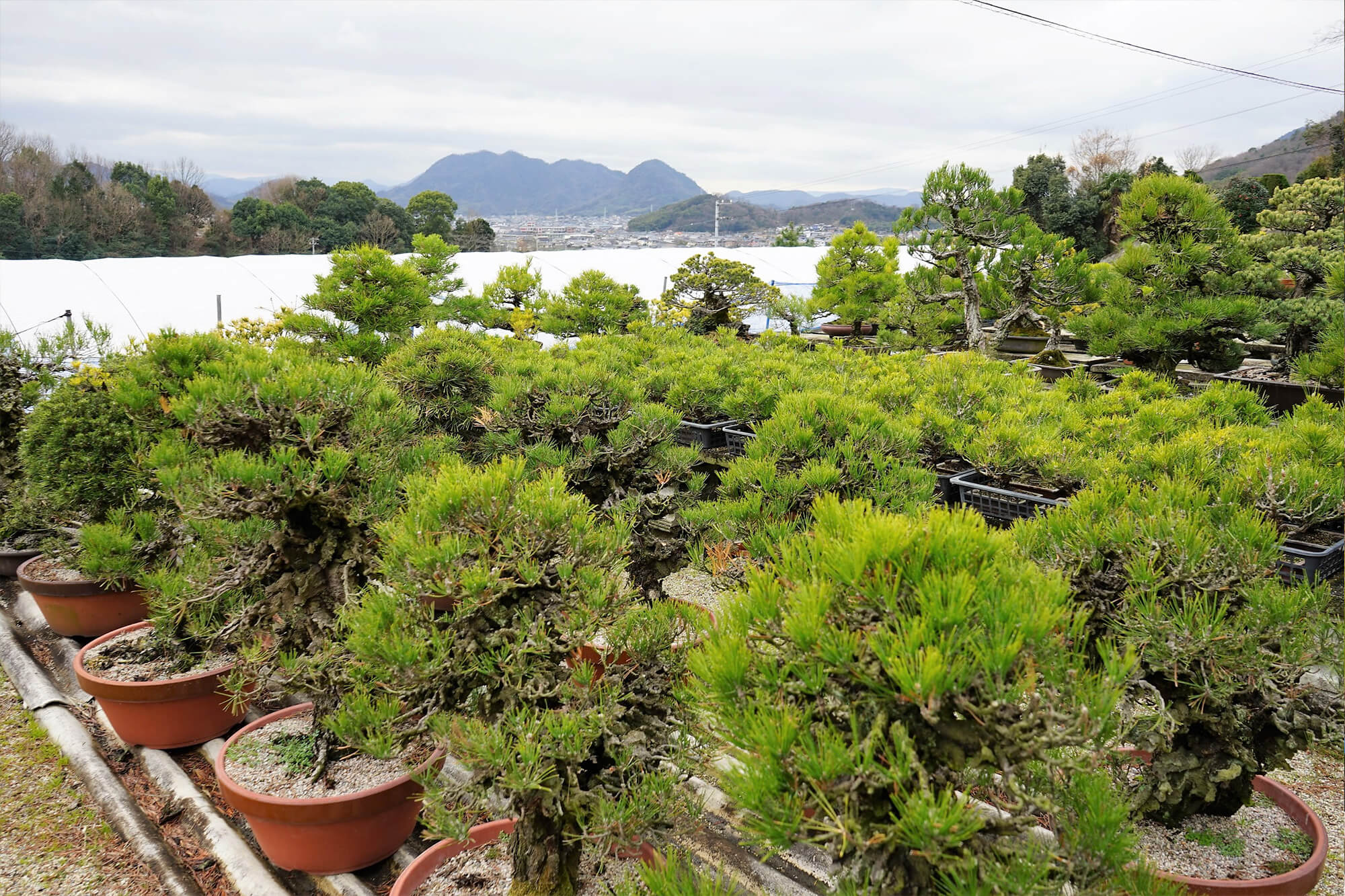Breeding conventional and unusual varieties through graftingRyoshoen
A bonsai garden that prepares seedlings
Ryoshoen lies on a hill a walkable distance from a convenience store about 2 kilometers toward Takamatsu from the Kokubunji Nii intersection on Prefectural Road No. 33. It is a hilltop garden with a fine view. This bonsai garden is increasing the number of evergreen seedlings using a skill known as grafting.
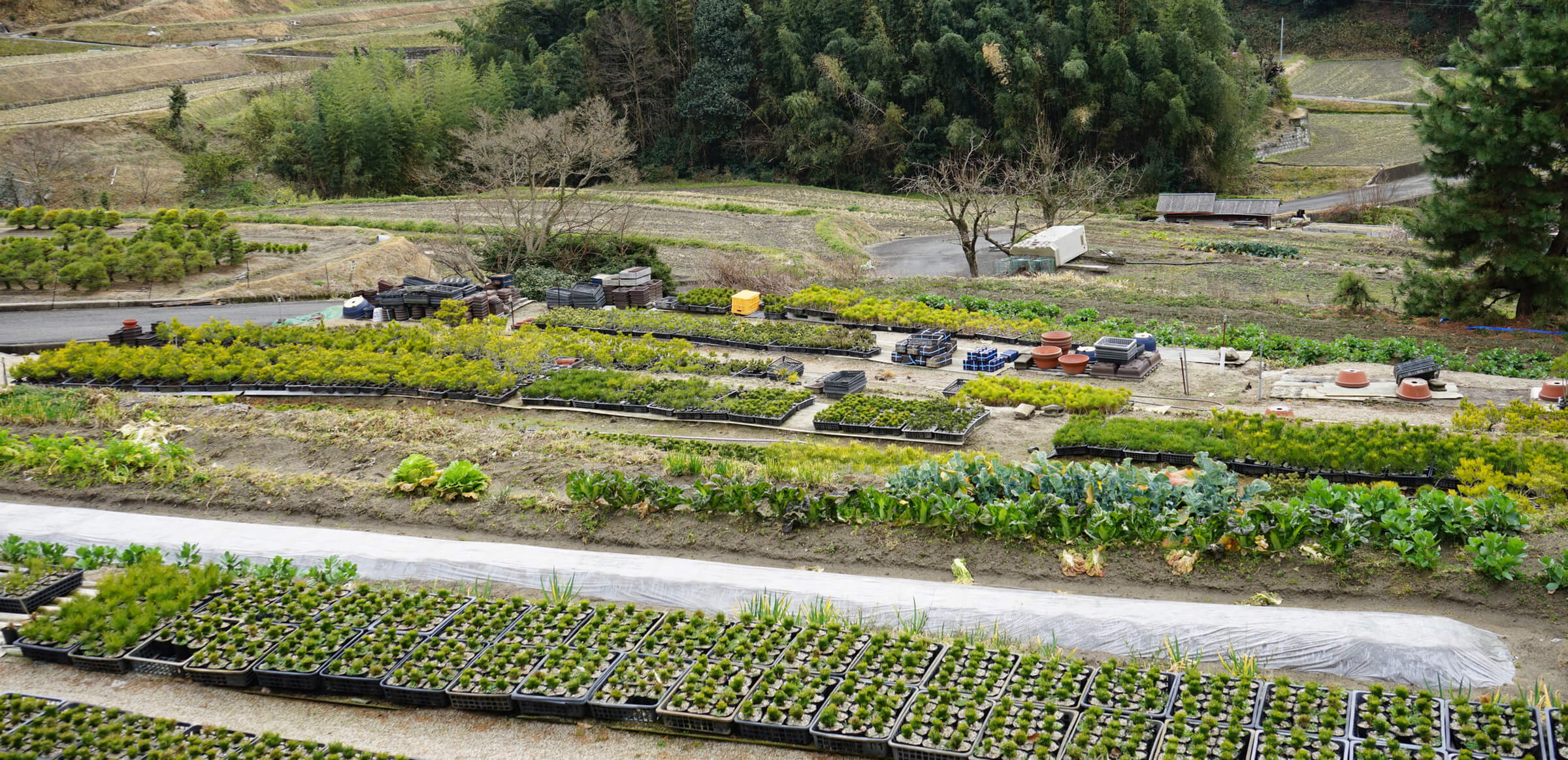
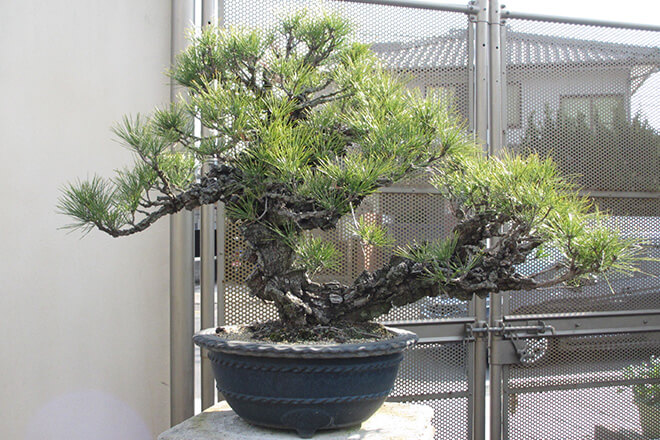
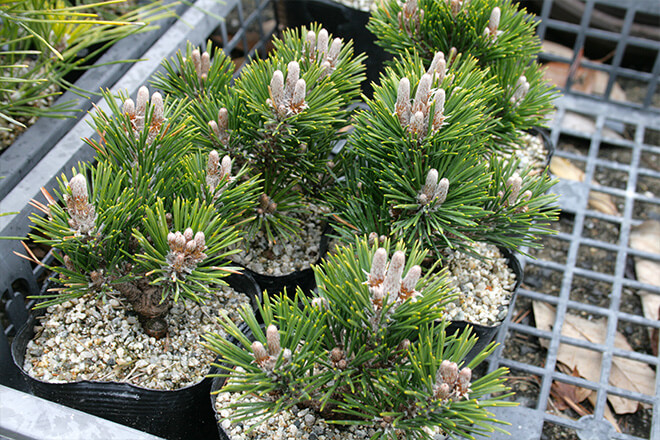
AYADA Tadahito, the second keeper of Ryoshoen, says that when he was 45, he started helping his father, who had opened this garden. AYADA, who had formerly worked as a Japan Agricultural Cooperatives farming instructor, says this is his 13th year at Ryoshoen.
Like the bonsai themselves, there are different branches to the bonsai business. AYADA says Ryoshoen is where materials are prepared.
“We are dealing in the first stage of the bonsai business,” explains AYADA. “You can buy bonsai at low prices here because we sell seedlings.” He wants many people to learn about all the unusual bonsai varieties that exist and grow the kinds of pines which have no fixed name yet.
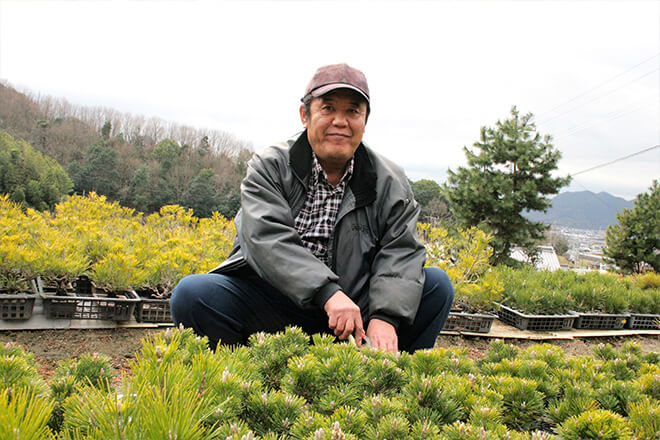
The first garden owner is a master of grafting
When asked to confirm the talk that he is a grafting master, AYADA denies it with a smile, saying his father is the master. “I’m still an apprentice with a long way to go,” says AYADA. “My jobs are to plant the pine seedlings my father had grafted in pots, water them, train them, and prune them.” Saying this, he took this reporter to a plastic greenhouse.
His 82-year-old father, AYADA Tadashi, was grafting a scion of Senjumaru, a variety born at this garden, onto a Japanese black pine stock there.
About 4,000 to 5,000 trees are grafted at Ryoshoen each year. “My father has no idea how many trees he has grafted,” since he has been grafting for about 50 years, informs AYADA. “He visits other gardens on request to graft for them, too. I have a long way to go to catch up with my father for those reasons.”
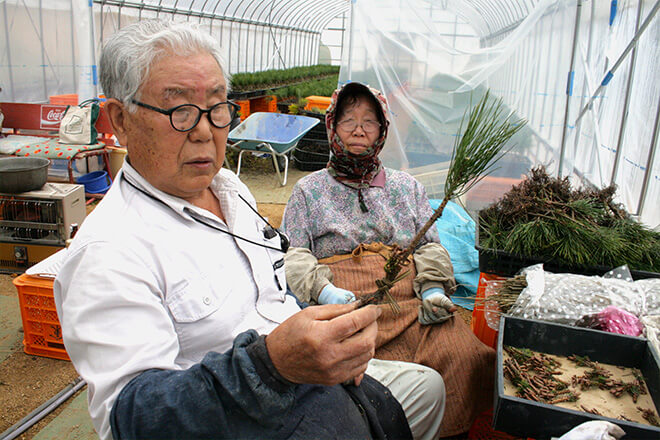
Growing important stock from seeds
Five people perform a series of tasks including cleaning stock and scions, grafting scions onto stock, and placing the grafted stock in pots.
“The knack of grafting is joining the cambiums of stock and scions,” explains AYADA.
Grafters cut a notch on the edge of a Japanese black pine root and graft a scion into the notch. The back of the greenhouse is packed with pots of pines planted after grafting. Tips of grafted Senjumaru leaves were visible at the base of those Japanese black pines.
The pine farm spreads outside the greenhouse, too. Pines that will become stock, which AYADA calls the most important, are grown there from seeds.
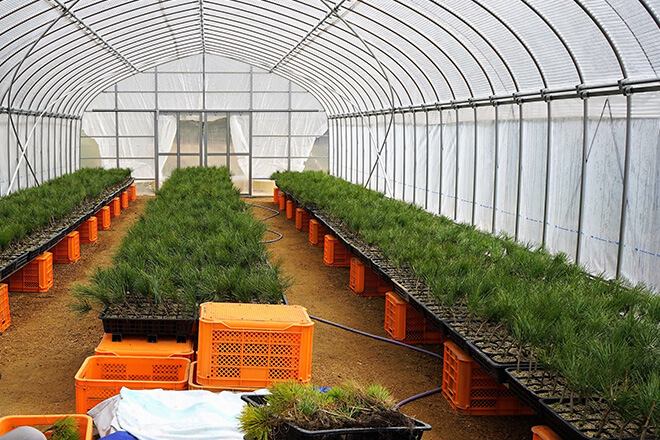
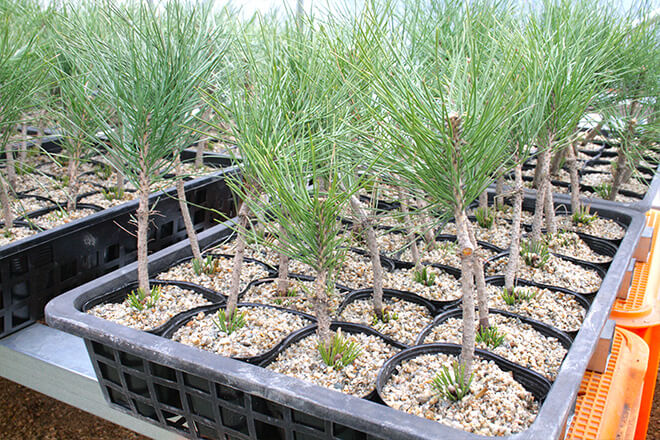
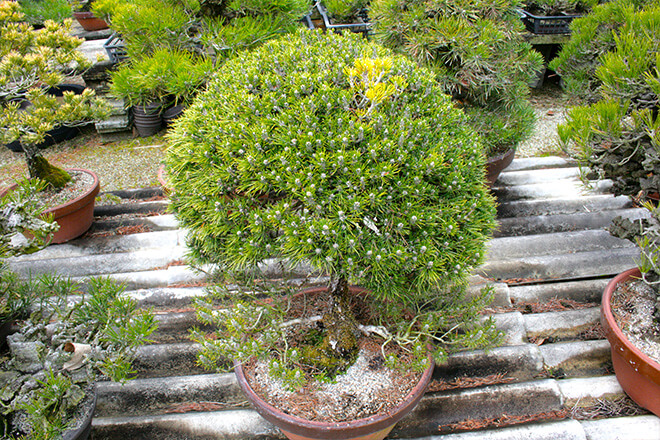
Senjumaru, a variety native to Ryoshoen
Senjumaru is a variety created by grafting a Kuromatshu Kotobuki scion to a Japanese black pine stock at Ryoshoen. The graft gave birth to a new variety which bears many buds on just one of its branches. AYADA Tadashi named this variety Senjumaru.
Using this first tree as rootstock, the grafting master has been growing Senjumaru seedlings one after another. Another variety is just now stretching its branches on that rootstock at present. People at Ryoshoen are looking forward to developing this new pine variety.
Ryoshoen
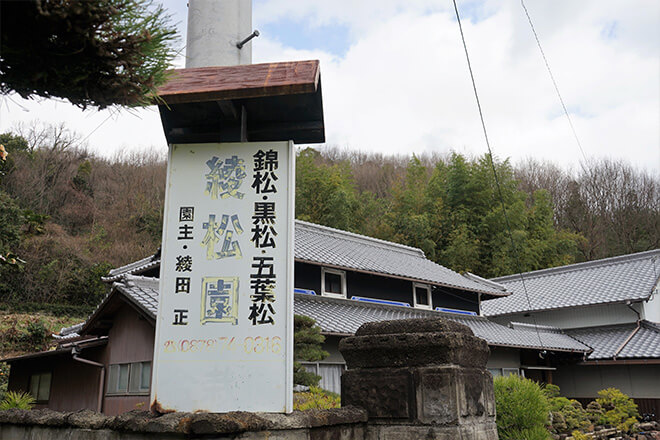
- ADDRESS
- 2804 Nii, Kokubunji-cho, Takamatsu City, Kagawa Prefecture
- TEL
- +81-87-874-0316

